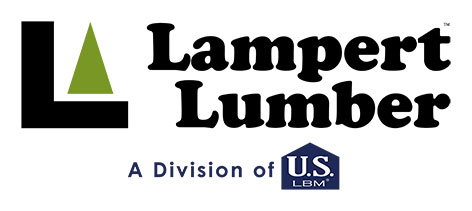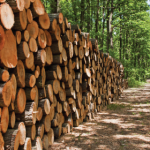Your Guide to the Different Grades of Lumber
An Overview of Lumber Grades and Wood Quality
Lumber is graded based on the quality and appearance of the wood. These depend on various factors like the type of wood used and the number and types of defects, if any. Before we get into the different grades of lumber, let’s take a look at the various defects you may find in a piece of lumber.
Common Lumber Defects
Lumber defects can give a unique character to a piece of wood, but for structural integrity, the defects should be kept to a minimum. Most of the following are caused by problems with cutting, stacking, or drying the wood—with the exception of naturally-occurring knots.
 Bow: A bow is a curve on the face of a board, typically extending from one end to the other. If the board was sitting flat, the ends would not be touching the ground.
Bow: A bow is a curve on the face of a board, typically extending from one end to the other. If the board was sitting flat, the ends would not be touching the ground.
 Check: A check is a crack that occurs along the wood’s growth rings. It does not extend through the entire thickness of the board. You may notice that the corners of a board do not touch the ground when the board is flat on a surface.
Check: A check is a crack that occurs along the wood’s growth rings. It does not extend through the entire thickness of the board. You may notice that the corners of a board do not touch the ground when the board is flat on a surface.
 Crook: A crook is a warp that happens along the edge of a board.
Crook: A crook is a warp that happens along the edge of a board.
 Cup: A cup is when the face of a board is hollow.
Cup: A cup is when the face of a board is hollow.
 Knot: A knot is a naturally-occurring defect in a piece of wood. Knots are circular imperfections caused by a broken-off tree branch. Tight knots are nothing to worry about, but dead or loose knots may fall out or leave a hole.
Knot: A knot is a naturally-occurring defect in a piece of wood. Knots are circular imperfections caused by a broken-off tree branch. Tight knots are nothing to worry about, but dead or loose knots may fall out or leave a hole.
 Shake: A shake is when the grain between the wood’s growth rings separates. Shakes can occur on the face of a board or below the surface.
Shake: A shake is when the grain between the wood’s growth rings separates. Shakes can occur on the face of a board or below the surface.
 Split: A split is a crack in a piece of wood that goes all the way through the board.
Split: A split is a crack in a piece of wood that goes all the way through the board.
 Twist: A twist occurs when there are multiple different bends in a board.
Twist: A twist occurs when there are multiple different bends in a board.
 Wane: A wane is when there is missing wood or an untrimmed edge along the side or corner of a board.
Wane: A wane is when there is missing wood or an untrimmed edge along the side or corner of a board.
Your Guide to Lumber Grades
As stated above, the various grades of lumber are determined by the appearance of the wood and the number of defects. These grades are determined by the U.S. Department of Commerce and the American Lumber Standards Committee. With that in mind, here is your guide to the various grades of lumber, listed from the highest grade to the lowest.
Select Structural Lumber
This is the highest grade of lumber, used for its strength and durability. You’ll find the least number of defects in this grade of lumber. Knots are permitted in certain sizes, as long as they are sound, firm, tight, and well spaced.
No. 1 & BTR Lumber
With this grade of lumber, few defects are allowed. Just like the Select Structural grade, knots are only permitted if they are tight and well spaced.
No. 2 Lumber
No. 2 lumber is the most common grade for framing. Lumber of this grade contains few defects, but knots are allowed of any quality as long as they are well spaced and do not exceed the size regulations.
Construction Grade Lumber
Construction grade lumber is used for light framing. Knots must be sound, firm, encased, and tight. There are limits on most of the defects, with the exception of some occurring only on the surface.
No. 3 Lumber
No. 3 lumber allows for more defects—as long as they don’t go all the way through the wood. Knots are allowed of any quality, as long as they are well spaced.
Stud Grade Lumber
Lumber of this grade has strength and stiffness values that make it suitable for use as a vertical member of a wall. In other words, a stud. There are varying levels of quality within this grade regarding appearance.
Standard Grade Lumber
Standard grade lumber is used for light framing projects. Knots in this grade of wood are not restricted regarding quality.
Utility Grade Lumber
Utility grade lumber is the lowest grade of lumber. It is used only for light framing projects. There are few restrictions on defects, when compared to the other grades.
Need help choosing the right grade of lumber for your project? Our lumber experts would be happy to assist you. Click below or visit any of our locations to learn more.

